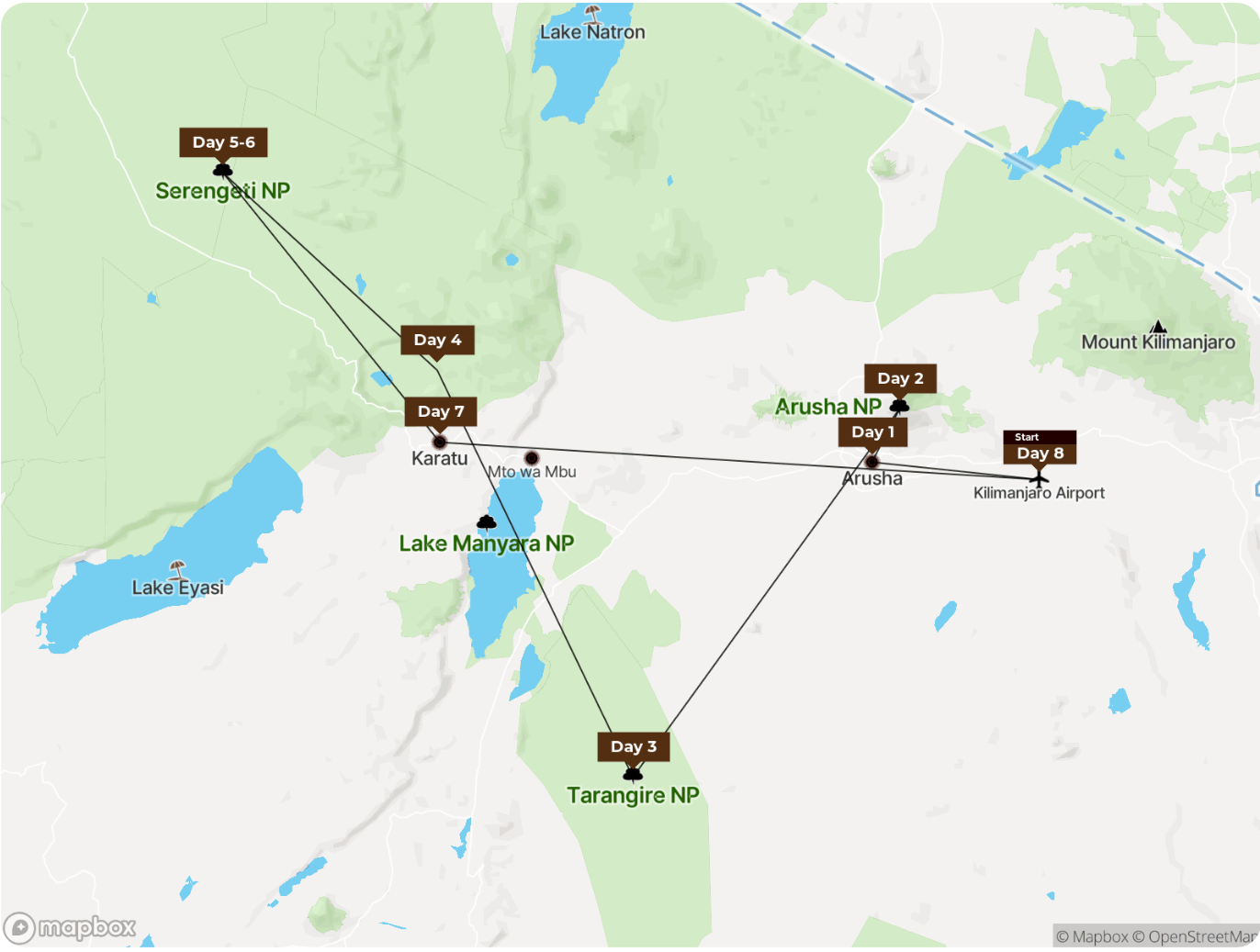- 4
- 6
- 1
- 5
- 4
- 5
- 1
- 4
- 6
- 1
- 2
- 9
- 1
- 4
- 1
- 5
- 3
- 3
- 1
- 7
The Ngorongoro Crater is one of the most remarkable natural wonders in the world, often referred to as the “Garden of Eden.” Located in the Ngorongoro Conservation Area, this vast caldera is the world’s largest inactive volcanic crater, covering over 260 square kilometers and home to an incredible concentration of wildlife. The crater floor is a rich tapestry of grasslands, forests, swamps, and lakes, making it a wildlife haven.
A visit to Ngorongoro offers an unparalleled safari experience, where you can witness an extraordinary variety of animals within a relatively small area. It’s a place where the Big Five roam freely, and where the landscape’s unique geology adds to the magic of the safari experience.
Diverse Wildlife: Ngorongoro Crater is home to a variety of wildlife, including lions, elephants, buffaloes, wildebeest, zebras, and hyenas. The crater’s dense population of animals is due to the abundant food sources and water that make the area an ideal environment. You are likely to see all of the Big Five in one day, along with cheetahs, hippos, and over 500 species of birds.
The Crater Floor: The flat crater floor is dotted with saltwater and freshwater lakes, which attract huge flocks of flamingos, as well as many other bird species. The lush green grasslands are perfect for grazing herbivores, while the nearby forests provide shelter for lions and leopards. This diverse environment offers excellent opportunities for wildlife sightings, no matter the season.
Endangered Species: Ngorongoro is one of the few places where you can see the black rhinoceros in the wild, a species that has become increasingly rare in other parts of Africa. The crater also serves as a haven for other endangered species, such as the vulturine guinea fowl and the cheetah.
Cultural Significance: The Ngorongoro Crater is not only a natural wonder but also a place of profound cultural importance. The area is home to the Maasai people, who have lived here for centuries and have managed to coexist with the wildlife. Visiting a Maasai village near the crater offers an authentic cultural experience, where you can learn about the Maasai’s traditional lifestyle and their deep connection to the land.
Year-Round Game Viewing: Ngorongoro Crater offers fantastic wildlife viewing year-round. However, the dry season (June to October) is particularly good for game drives as animals tend to gather near water sources, making them easier to spot.
The Wet Season: The green season (November to May) is when the crater becomes lush and green. This time is great for photography and for those looking for fewer tourists. The wet season also brings the calving season, making it a prime time to witness predator-prey interactions.
The Ngorongoro area has a range of accommodations to suit every preference, from luxurious lodges perched on the crater’s rim with stunning views of the caldera, to tented camps that bring you closer to nature. Staying near the crater allows you to embark on early morning and late afternoon game drives to maximize your wildlife viewing.
Ngorongoro Crater Lodge: A luxury lodge offering panoramic views of the crater, combining elegance with the experience of staying on the edge of this natural wonder.
Ngorongoro Serena Safari Lodge: Set on the crater rim, this lodge offers a more intimate experience with a great blend of comfort and location.
Camping and Mobile Camps: For those seeking an immersive safari experience, mobile camps and public campsites provide a more rugged, yet rewarding, stay.
Game Drives: The highlight of a visit to Ngorongoro is the game drive down into the crater, where you can observe the park’s dense population of wildlife. The flat, open landscape makes it easier to spot animals, and game drives typically last a few hours, offering great opportunities to capture unique moments.
Cultural Visits: Discover the fascinating culture of the Maasai people, who have lived in the area for centuries. Visiting their villages gives you the chance to learn about their traditions, lifestyle, and close connection with the land and wildlife.
Hiking: For those looking for a more adventurous activity, hiking along the crater’s rim offers stunning views and an opportunity to learn about the crater’s geological history.
Photography: The crater offers exceptional photography opportunities, from the expansive landscapes to the diverse wildlife. The lush greenery during the wet season and the golden savannah in the dry season provide a perfect backdrop for your safari photos.
At Ngotea Distinctive Safaris, we provide expertly guided safaris to the Ngorongoro Crater, ensuring you experience this natural wonder to its fullest. Our knowledgeable guides will take you on game drives across the crater floor, showing you the best wildlife hotspots and sharing insights about the area’s history, culture, and wildlife.
We offer tailored itineraries that can combine visits to Ngorongoro with other iconic destinations in Tanzania, such as the Serengeti, Tarangire, and Lake Manyara, for a truly unforgettable safari experience.









